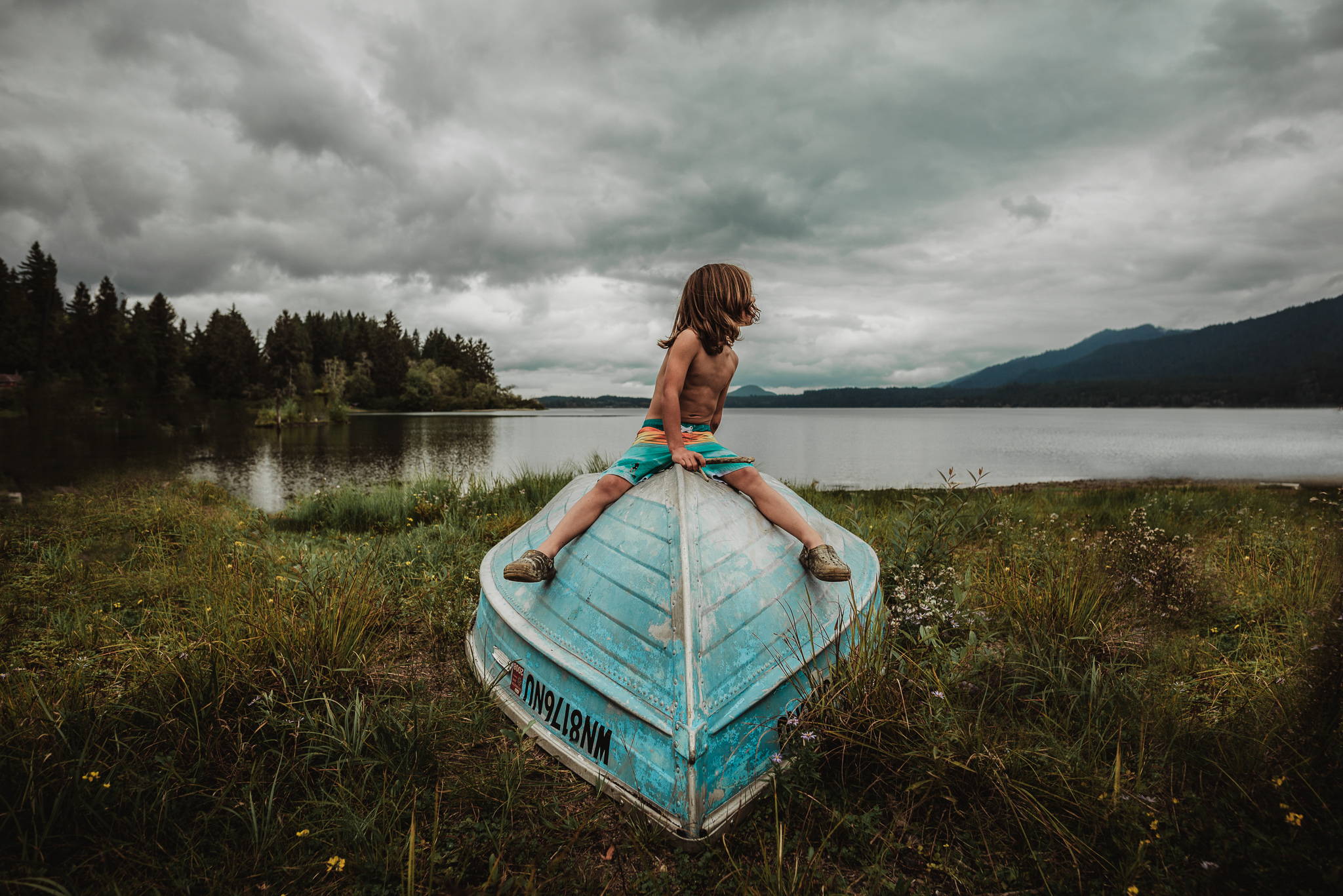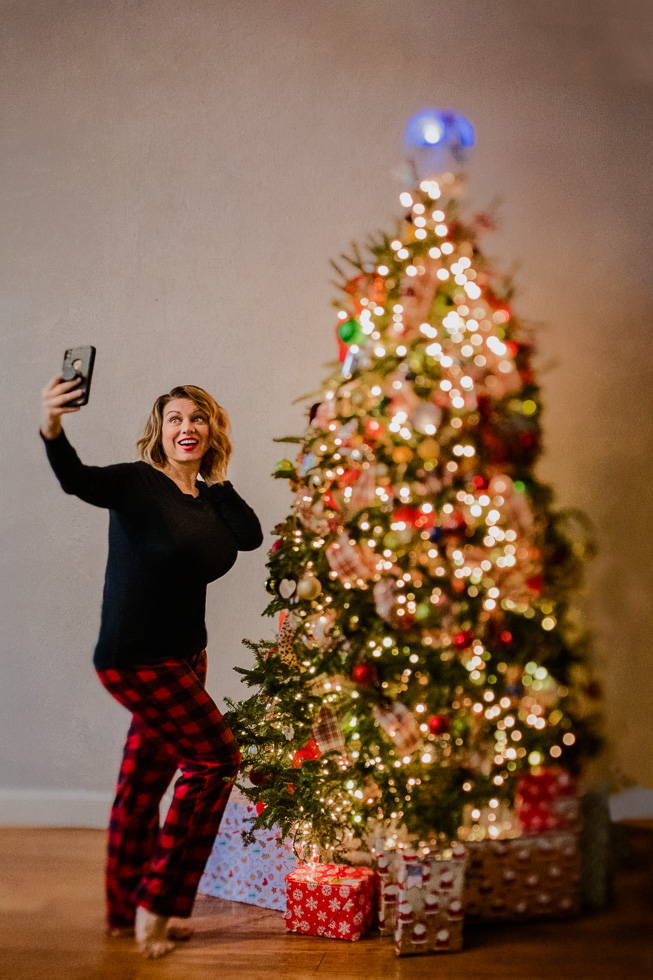Lensbaby Sweet 50 | ISO | 800 | 1/100 | Nikon D750
Nothing says more about autumn than spending time with family and friends during the Thanksgiving holiday.
In our home, one of the best traditions happens after we are all seated at the table, and everyone has a chance to express what they are truly thankful for – we shed a few tears as we all realize how much gratitude we have, and then it’s time to enjoy the food and good times.
So much time and love go into preparing the Thanksgiving holiday meal and all that surrounds the celebration. With a few tips and prepare ahead of time, you can make some memorable images to highlight the star of the show – Food!
1. The Best Lenses for Food Photography
Food photography is a sub-set of still life. You are in charge of telling the story, which involves several ways to highlight your subject. This can be with a specific lens, angle of view, lighting, styling, and color or textures.
The first thing to consider is what lens will work best to bring your story with visual interest to the viewer.
My favorite lenses are those with a 50mm field of view or a macro lens, which will isolate and draw attention to parts of my subject using a shallow depth of field. A 50mm range lens is a perfect choice because it has very little distortion, and working within a smaller space indoors will give you enough working area to achieve a small or larger tablescape with your camera.
It is also easy to adjust your position and angle with this focal length, and a wider aperture of f/2.8 will give you a great deal of control with natural lighting. A 50mm also works beautifully to use for an overhead (flat lay) point of view, which is a very popular way to tie food with props for storytelling. In particular, I find using the Lensbaby Velvet 56, Twist60, and Sweet 50 all give my work away to stand apart from others. Don’t be afraid to try other lenses that might specifically work for your space and set up as well.
2. Choose Natural Light when Possible for Food Still Life
Natural soft window light will highlight your subjects best. If you can set up a small table near a window, you will not need to add artificial light. Try arranging your food, props, and plated dishes using side lighting, if possible.
This creates soft shadows with depth and will also keep food from having harsh specular highlights. Make sure you turn off any artificial lighting, which will compete with natural light and might lend your subject unwanted color casts.
It’s also easy to control natural light with the use of reflectors. A white reflector or large piece of foam core board can be used to reflect and bounce light back into your scene. Placing it facing the opposite side of the window’s light source will also brighten your shadows. If you want less light in your overall scene or more shadows, you can do the opposite by using a blackboard to manipulate parts of your setup. It’s easy to see the light and shadows by using these simple light shaping tools as you place them at angles just outside the edge of your camera’s view.
You also have even more control over the window light by moving your table closer or farther from the light. If you have direct sun filtering through your window, you can control the amount of light with a large translucent reflector in front of the window, or you may want to try using directional light for stronger shadows. The point is, with natural light, you have a lot of control and can see how it affects your tabletop arrangement. I also like shooting toward the end of the day when low light filters through my window for a dark and moody feel. If you are in a situation indoors where you need to augment your light with an onboard flash, try bouncing the flash head onto a neutral-colored wall behind or slightly above you on the ceiling. Shooting raw is important so that you have the ability to tweak your white balance in post-processing. Food needs to have mostly warm tones without any unwanted color casts such as yellow or green.
You can see which direction the light is coming from in the images below, even though it may be subtle.
Look at the shadows and notice how each subject is lit mostly from one direction with stronger side lighting than front flat light with no depth.
"One tip I like to do when creating a still life food setup is to place your food subjects and props at slightly different heights with obvious taller objects in the background."
3. Angle of View
How you place your camera in relation to your food setup is very important. You will need to do a little pre-planning when thinking about the overall story you want to tell when you arrange your food and props together.
For a special event like Thanksgiving, you may have the opportunity to arrive early and capture images of the tablescape that has been set up for guests before everyone is seated. This is usually an easier task because you can walk around the table with your camera from different vantage points and also use your macro lens to get up close for detailed shots of decorations, plates, glassware, and flatware. For food photography specifically set up at a table, there are about three different angles that are important to how we see the food. A 90-degree angle is shot straight toward your subject and will show lots of layers (think stacked pancakes). A 45-degree angle will show more of what’s on the plate or the table. Think about what you see when you’re seated in front of your plate and look down: you can see what is in the bowl vs. the edge of the bowl when you position yourself at eye level. An overhead shot (or flat lay) will show everything from directly above in a spatial relationship. This is a great way to arrange several food subjects with props in a fun and interesting way and tell your story. So how you photograph the food and at what angle will depend on what parts or single elements of the food you want the viewer to see. One tip I like to do when creating a still life food setup is to place your food subjects and props at slightly different heights with obvious taller objects in the background. When subjects are staggered this way, the camera view can see everything on the table, rather than having one subject or more hide what is behind it. As an example, you can elevate shorter items on a stack of books or a small pedestal in your table set up.
In the hamburger example below, you can see how a 90-degree angle is important to show the stacked and colorful layers that make up the sandwich.
Lensbaby Burnside 35 | ISO | 1000 | 1/60 | Nikon D750
In this view of the plated food below, we see the dish at about a 45-degree angle or the same view you would see seated at the table.
Lensbaby Velvet 56 | ISO | 800 | 1/50 | Nikon D750
With the three images below, different lenses were used with various angles. This shows the viewer all the beautiful parts of this Thanksgiving Almond Custard Tart, which is laden with fresh figs, grapes, and plums. Try using different lenses on the same setup to convey a slightly different look and feel in each set of your images.
4. Styling and Props
One thing nice about a special gathering like Thanksgiving is that this is the time of year when everyone is excited to get out all their special glassware, plates, and fall-themed decorations. You likely won’t have to think about dressing up your food captures with extra props if you’re traveling away from home. Take a close look around when you arrive to see all the special details you can capture.
If you’re going to be cooking or baking before the festivities at your own home, consider thinking about arranging a few special table setups with props the day you are preparing food.
Interesting flatware, linens, and rustic props are especially nice for this time of year. And don’t forget fall foliage or flowers for a splash of color. A beautiful collection of fall leaves picked up outside adds a wonderful seasonal touch.
Small wood pedestals are nice for showing baked goods and easy to dress up with natural herbs, berries, or flowers. Doing something simple like adding cranberries to a cocktail pitcher can make a beautiful and simple display when placed on the table. It’s important to think about creating high-quality food imagery rather than a snapshot of what you’re eating. If you can add some aesthetic appeal with props and a bit of creative design, your images will engage the viewer beyond what is just on the plate.
If you have candles set on the table, it’s nice to get a shot of the table brightly lit and then lower the lights to see the beautiful ambiance with candlelight.
5. Star of the Show – Showing Food with Movement
Food is no doubt the star of the show for special occasions like Thanksgiving. Food, sharing, and family gathering are all part of this special holiday. It’s a good opportunity to try and incorporate a sense of movement into our food-based images, which will bring them to life. Whether it is a set of hands in the preparation of a dish or an element of implied movement, such as sifting powdered sugar over a Bundt cake, aside from all the actual family photos you will be taking at a large gathering, look for opportunities to add a small human element or action within your food still life images - these will sustain those memories long after the food is gone.
And lastly, don’t forget to capture some shots of the children’s artwork on display. Have a Happy Thanksgiving!
Nikon 50mm | ISO | 1000 | 1/40 | Nikon D750
Want your shots featured by Lensbaby?
Be bold and shoot extraordinary! Make sure to tag your photos on IG with #Lensbaby, #ShootExtraordinary, and let us know what gear you’re using. 📸
Gerri Jones
Gerri enjoys photographing all subjects and especially the challenge of new ways to see through the creative use of Lensbaby lenses. She is a Lensbaby Ambassador.
Gerri has been a featured speaker/instructor at regional camera conferences.
Gerri’s images have been featured in several publications, commercial proposals and she also has reviewed several photography books for development by Focal Press Publications. Her images have received several first place awards in national and regional photo competitions.
Gerri resides in Buffalo, New York.
Website Facebook Instagram



Leave a comment
All comments are moderated before being published.
This site is protected by hCaptcha and the hCaptcha Privacy Policy and Terms of Service apply.